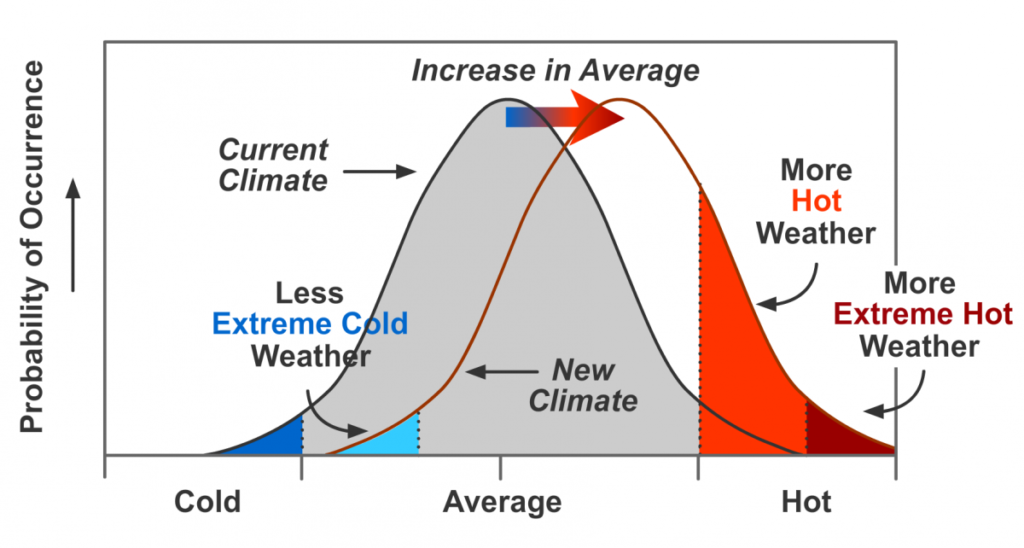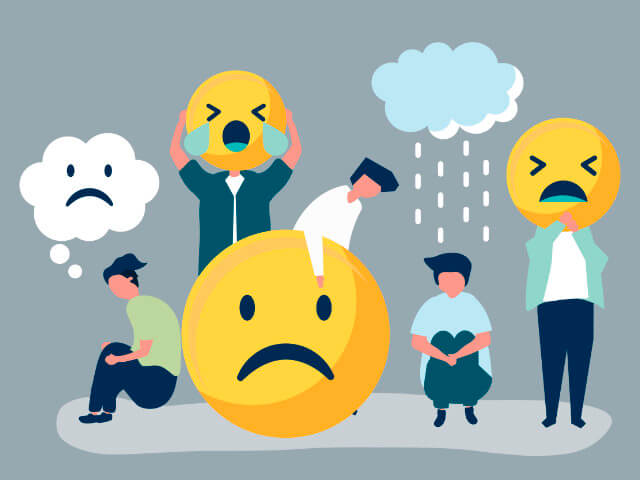Taking action
Young people want to know what they need to do and what we need to do collectively to address climate change.
Theme Questions
Stopping, or reducing climate change, known as mitigation, is something that is really important so I’m very glad you’ve asked how to do this.
Reducing climate change will involve lowering the level of greenhouse gases in the atmosphere. This means reducing the emission of heat-trapping greenhouse gases. This is done by reducing the use of fossil fuels and moving to renewable energy sources, like wind, solar and ocean wave energy instead. The effectiveness of these energy sources is improving all the time and around the world (especially in Australia) they are becoming a major source of energy already. Increasing efficiency and finding ways of reducing energy use and waste is also very important. Around the world businesses and governments are making commitments to reduce the use of fossil fuels and to transform manufacturing, food production and transport (e.g. trucks, cars, trains and shipping) to electricity or other fuels (like hydrogen).
Another way to help mitigate climate change is to support processes that actively remove carbon out of the atmosphere. Healthy oceans, forests and soil are great carbon stores. This means restoring and protecting these environments and supporting sustainable practices will help. Growing trees is a great way of helping remove carbon from the atmosphere. This effect is so large that the natural regrowth of Tasmania’s forests means that the state is currently a carbon sink – meaning more carbon is removed from the atmosphere than is emitted. This means as a state Tasmania is doing better than the net zero emissions target governments around the world are talking about.
Rather than just letting the trees do all the heavily lifting though we can help Australia and the world by reducing our individual emissions. On a personal level that means turning lights and appliances off when you’re not using them; putting on a jumper rather than turning the heating up to full; and walking, cycling, or using public transport if we can. Also finding out about what you eat and changing to options that contribute less to climate change can also help. Agriculture is a major producer of greenhouse gases so look for low carbon meals, such as sustainable seafood and local seasonal foods, and try having at least a couple of red meat free days a week.
In addition to reducing energy use we can also consume less (e.g. use clothes for longer rather than chasing the latest fashion look), increase recycling and appropriately dispose of organic waste (e.g. food scraps). Methane is a powerful greenhouse gas, over twenty years it is about 80 times more potent at warming than carbon dioxide. When food and garden waste is buried with general garbage the microbes and chemical processes that break the waste down cannot easily access oxygen and so they produce a lot of methane (known as anaerobic breakdown). However, if you put the organic waste into a compost bin (at home or one provided by the council) the microbes can access oxygen and so they use a process that produces much less methane (known as aerobic breakdown). The nutrient rich compost that results also means more plants can be grown (absorbing carbon) and less energy is needed to make artificial fertiliser. A win-win-win.
The biggest thing you can do to help climate change is to stay informed, to help share useful information and to think about your actions – each little bit really does help. Around the world innovations and action by young people is helping accelerate action to reduce climate change.
For starters, you might like to find out how Tasmania’s tree growth is helping our carbon budget. NASA also has a great page on climate change, which mentions some solutions. The United Nations also has some high-level information on different activities around the world.
You might also like to play with the simple climate model at en-Roads, explore options for reducing climate change
This is a great question as it highlights the important role of thinking about our food choices in responding to climate change. But if everyone in the world was vegan, that wouldn’t necessarily be the best way to help slow climate change because we would need a very large land area to grow enough crops. Cutting down trees to clear land for crops is not helpful for climate change because we need trees to help take carbon out of the air.
So instead of everyone in the world being vegan it would be better if everyone in the world reduced how much beef and lamb they ate to maybe once or twice a week or even less and for the rest of the time ate more chicken, fish or vegetarian meals. It is healthier for us to eat less red meat anyway and in Australia we already eat far more red meat than dieticians recommend. That is because we farm a lot of cattle here and our access to high quality and affordable meat is good.
Being vegan can be a much more environmentally sustainable way of eating if you are eating local (or home grown) produce, but it can have health implications for some people, especially children, so it is important to make the decision considering health as well. So the answer is yes, being vegan can really help to reduce emissions but the key part is being aware of what you are eating.

There are also other options to eat more sustainably. Eating food that you grow yourself is great. Do you have chickens at home? As well as eating more locally produced food, including meat. Trying to reduce waste from the food that you eat is also helpful. Eating kangaroo and wallaby is another great option for red meat! Have you tried wallaby? It is great on the BBQ or in a curry. So it is helpful for climate change and our health to reduce the amount of meat we eat, particularly red meat, but meat is still ok in small amounts. Thinking about what we are eating, how it was produced and where it is coming from and making choices that have less emissions is a really great way to help combat climate change.
How hot it will get by 2033 depends on mitigation actions taken today. If greenhouse gas emissions are reduced quickly and net-zero CO2 emissions achieved, there will not be as much warming as there will be if these actions are not taken.
In Tasmania it is predicted to average between 1.05 and 1.27 degrees Celsius warmer than pre-industrial levels in the year 2033. Now this isn’t as high as the predictions for global temperature increase, but that’s because there are significant local variations in temperature increases. Tasmania is an island – so the ocean helps keep us a bit cooler than other places.
There will be more days that are unbearably hot – because the increasing average temperature means that extreme temperatures will increase too, creating more hot and extremely hot weather.

While by 2033 it will not be unbearably hot in Tasmania very often, there will still places in the world where this temperature change has a really big impact. Climate scientists predict that extreme weather are heatwaves are going to increase and get more extreme. Urban air temperature is also often higher than in rural environments, due to heat generated by traffic and industrial activity, as well as the spread of heat-trapping concrete buildings that have steadily replaced plant life. Heat waves impact vulnerable people the greatest – children, the elderly, those with existing health conditions, people who are experiencing homelessness and people in financial difficulties. It is important that we are looking after the most vulnerable in our communities and in the global community.
There are things we can do. For example, urban greening! More information about urban greening can be found here: https://theconversation.com/urban-greening-can-save-species-cool-warming-cities-and-make-us-happy-116000
Your generation already are and will continue to live with the impacts of climate change as you get older. And this can feel frustrating and scary as you look towards your and our planet’s futures. Lifestyles may change, but that doesn’t mean you can’t live a full life. If you’re needing some help with what to do with these feelings have a look at our page on the Curious Climate website.
You can have a look at an interactive map that shows predicted warming here: https://www.carbonbrief.org/mapped-how-every-part-of-the-world-has-warmed-and-could-continue-to-warm
Absolutely - there is this potential! There is a long history of global social change which has come about when humans have united and worked together. Social movements historically have been able to create big structural change, the kind of big change we will need to face climate change. These movements in the past include things like the Suffragettes who worked to give women the vote and the Civil Rights Movement which worked to abolish segregation. Humans are cooperative beings, we work together – and we’ve seen this time and time again in history.
We are already seeing unity in responding to climate change in many ways. School Strike 4 Climate and Fridays For Future movements are examples of how local unity of young people is part of a global movement. The Paris Agreement is also an example of how lots of different countries can come together for a shared goal. The IPCC too is a whole bunch of scientists working together to learn more about and respond to climate change. We have the capacity as humankind to work together (just look at the changes we were able to make during COVID in a really short amount of time!).
There is also the potential that climate change will exacerbate conflict and cause greater competition over resources as they become scarcer. So, whilst climate change does have the potential to unite humanity, it also has the potential to cause conflict and further divide people in power from people who don’t. That’s why it is important that we are working to find ways to collaborate now as we look to the future.
You can be a part of this! Collaborating and working together to respond to climate change in a united way can include you. This can be small scale collaboration as a school, or community groups, as well as national and international collaboration. Finding practices to work well together to share learning, to care for one another, and to respond to the threats of climate change is really important.











